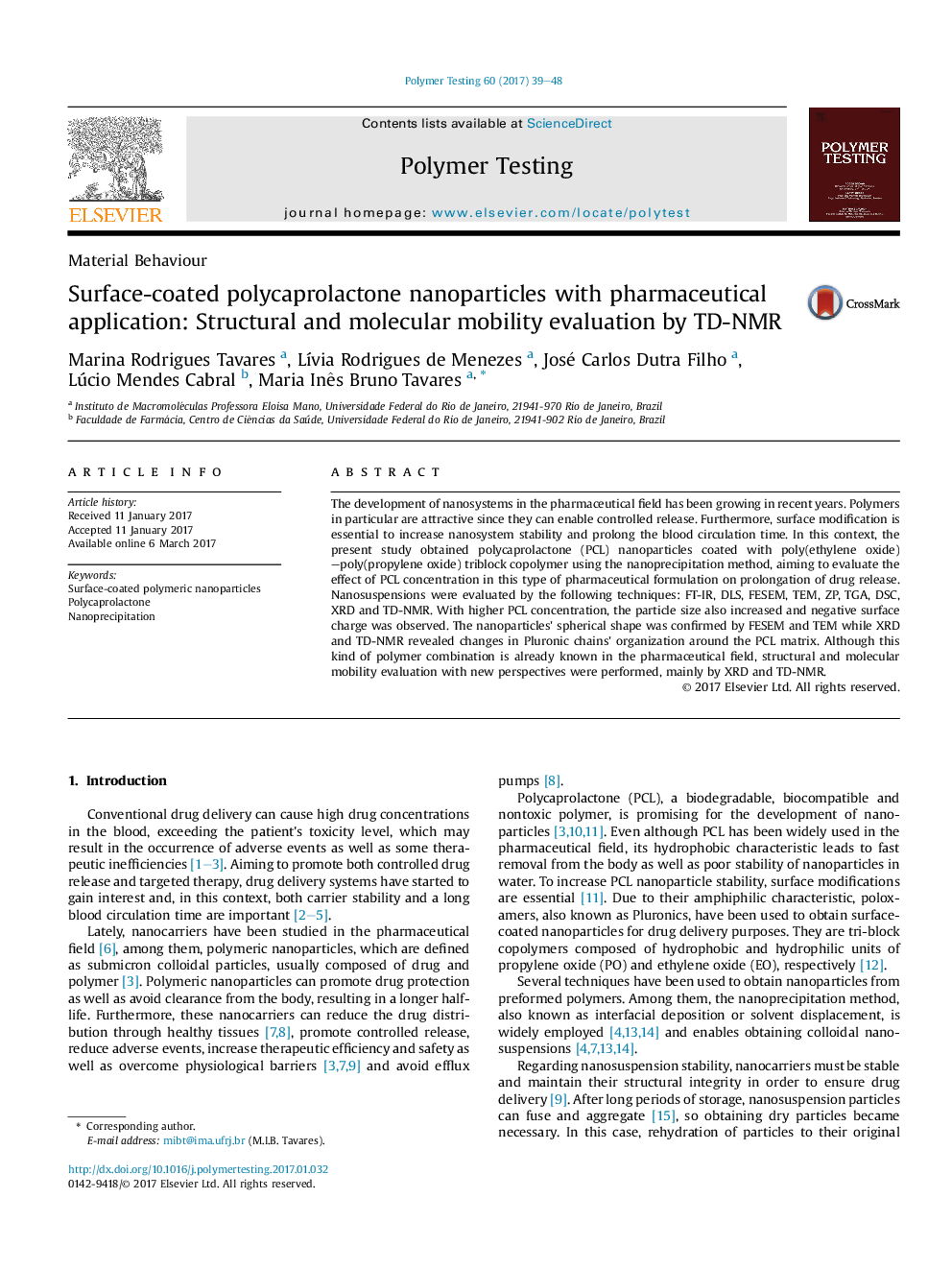| Article ID | Journal | Published Year | Pages | File Type |
|---|---|---|---|---|
| 5205418 | Polymer Testing | 2017 | 10 Pages |
The development of nanosystems in the pharmaceutical field has been growing in recent years. Polymers in particular are attractive since they can enable controlled release. Furthermore, surface modification is essential to increase nanosystem stability and prolong the blood circulation time. In this context, the present study obtained polycaprolactone (PCL) nanoparticles coated with poly(ethylene oxide)-poly(propylene oxide) triblock copolymer using the nanoprecipitation method, aiming to evaluate the effect of PCL concentration in this type of pharmaceutical formulation on prolongation of drug release. Nanosuspensions were evaluated by the following techniques: FT-IR, DLS, FESEM, TEM, ZP, TGA, DSC, XRD and TD-NMR. With higher PCL concentration, the particle size also increased and negative surface charge was observed. The nanoparticles' spherical shape was confirmed by FESEM and TEM while XRD and TD-NMR revealed changes in Pluronic chains' organization around the PCL matrix. Although this kind of polymer combination is already known in the pharmaceutical field, structural and molecular mobility evaluation with new perspectives were performed, mainly by XRD and TD-NMR.
